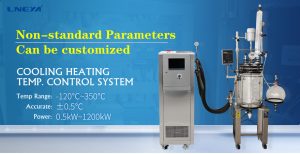Why does a chiller need to be installed for cooling the water storage tank?
The main reasons for configuring a chiller for cooling the water storage tank are related to the following aspects:
Temperature Control: In many industrial and commercial applications, such as air conditioning systems, chemical processes, food processing, pharmaceutical production, etc., the water in the water storage tank needs to be maintained at a specific low temperature state to meet process requirements or provide cooling capacity. The chiller reduces the temperature of water in the storage tank by circulating cooling water or refrigerant, and maintains this temperature within the set range to ensure stable system operation and product quality.
Improving Efficiency: In some applications, such as the comparison between air-cooled water chillers and water-cooled chillers, it is mentioned that chillers can provide higher cooling efficiency by directly cooling circulating water instead of relying on ambient air for heat dissipation. Especially when the ambient temperature is high, the chiller can provide low-temperature water more stably, avoiding the impact of environmental temperature fluctuations on the cooling effect.
Save Water Resources and Energy: The cooling system of the water storage tank equipped with a chiller can reduce water consumption by circulating cooling water. Meanwhile, modern chiller design emphasizes energy efficiency and adopts energy-saving technologies such as variable frequency drive and high-efficiency heat exchangers to reduce energy consumption.
Equipment Protection: In some process flows, such as reactor cooling in pharmaceutical processes and precision equipment cooling in semiconductor manufacturing, the chiller stabilizes the cooling water temperature to prevent equipment damage or performance degradation caused by high temperatures, thereby extending the service life of the equipment.
Environmental Adaptability: In areas with unreliable natural water sources or high temperatures, chillers can provide stable cooling capacity and are not affected by external environmental changes, ensuring uninterrupted cooling services throughout the year.
Flexibility and Scalability: The chiller can adjust its cooling capacity according to actual needs. For systems that require flexible adjustment of cooling capacity or may be expanded in the future, the chiller provides good adaptability and scalability.
In summary, configuring a chiller for cooling water storage tanks not only ensures precise temperature control and improves overall system efficiency, but also plays an important role in protecting critical equipment, saving resources, and adapting to different environmental conditions.
customized indoor and outdoor chillers
Related recommendations
-
Industrial grade heating and cooling system placement attention
1845Industrial-grade heating and cooling system Before the power is turned on, check whether the voltage specified on the nameplate is the same as the household voltage. The same can be used to arrange separate power lines and special sockets for the ...
View details -
What reactions are microchannel reactors suitable for?
1620In recent years, micro-chemical technology has developed rapidly, and micro-channel reactors have attracted more and more attention. Microchannel reactors are manufactured with the help of special micromachining technology. They have the advantag...
View details -
What are the main equipment needed for industrial chillers?
1332Main equipment of industrial chiller: compressor, condenser, expansion valve, evaporator, chilled water pump, cooling water pump cooling tower (water cooling) Selection: know the required inlet and outlet water temperature, the required cooling ca...
View details -
Factors affecting cooling capacity during temperature control of battery test equipment
1832Battery Test Equipment Refrigeration System The greater the power of the battery test equipment compressor, the higher the cooling capacity. According to the size of the battery test equipment, the compressors of different types are selected. For ...
View details
 LNEYA Industrial Chillers Manufacturer Supplier
LNEYA Industrial Chillers Manufacturer Supplier
















